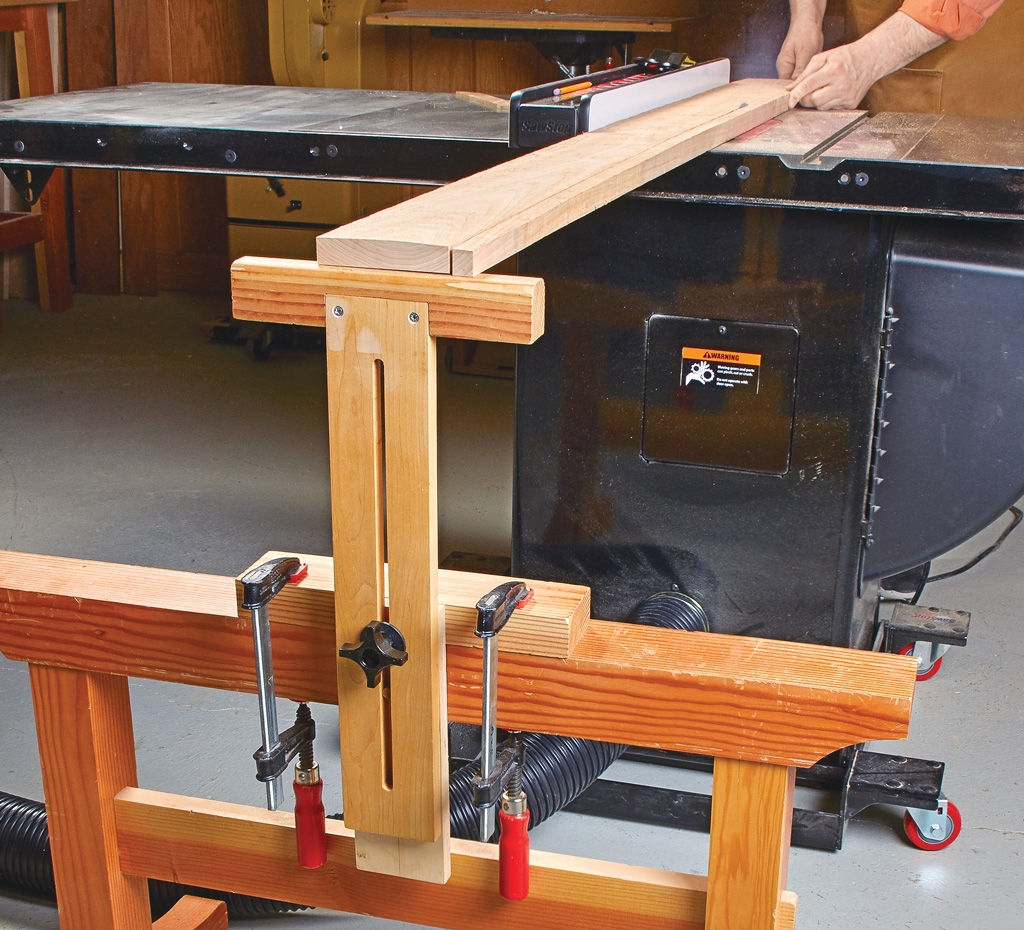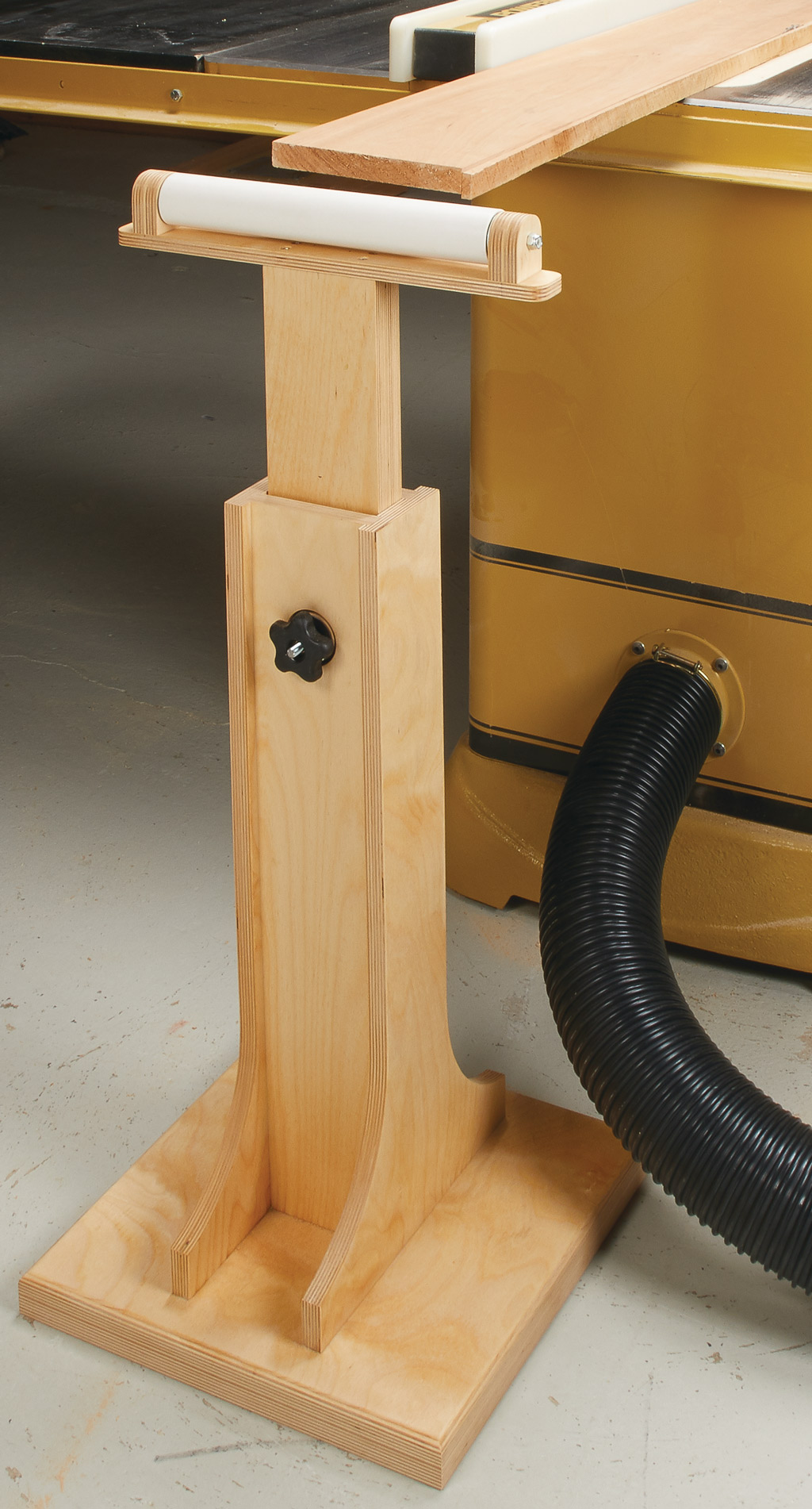
If I had to pick one "can't live without" table saw accessory, I wouldn't hesitate. A high-quality, carbidetooth, stack dado blade would be my first choice hands down. Dollar for dollar, a stack dado blade is one of the best investments you can make to expand the capabilities of your saw and improve the quality and efficiency of your work.

LOTS OF CHOICES. The upshot is that since a stack set can be such a valuable addition, it pays to purchase one that will give you the most bang for your buck. There are a couple of things you need to consider when choosing a stack dado blade. Probably the most important factor is quality of cut. And second to this is ease of use and versatility of the blade. Will it do everything you want it to do?
The good news is that there are a number of dado blades on the market that satisfy these criteria. But many offer slightly different features. In order to know what to look for, it's helpful to have a good understanding of both the basics and some of the finer points.
THE SIMPLE STUFF. A stack dado blade set consists of two outer scoring blades and a number of chipper blades. The two scoring blades are used in combination with a specific number of chippers to obtain a cut of the desired width.
Both scoring blades are always used in the stack - positioned on either side. (There is a right and left blade.) They are responsible for cutting clean, smooth shoulders. The chippers simply remove the waste from between the scoring blades.
SIZE. The overall range of widths that a dado blade can be set up to cut is pretty standard - 1/4 " to 13/16 " (sometimes 7/8 "). So this isn't a factor when choosing a blade.
The maximum depth of cut, determined by the diameter of the blade, is something to consider. Many dado set models come in both 6" and 8" diameters. (8" is more common.) You'll find that the extra depth of cut offered by the larger blade can come in handy and is worth the slight extra cost.
SCORING BLADES. There are two aspects to rating the quality of a dado blade cut. Ideally, you want both clean, chip-free shoulders and a flat bottom. The scoring blades play the lead role here. The tooth configuration, the number of teeth, and the tooth geometry all factor into this.

First let's look at the tooth configuration. This is pretty universal from blade to blade. The scoring blades alternate beveled teeth with flat raker teeth. The beveled teeth scribe a clean shoulder while the flat raker teeth follow to create a flat bottom. Since each scoring blade is only responsible for cutting one shoulder, the beveled teeth all point outward. This is why you have a right and left scoring blade.
The beveled teeth are ground to cut slightly deeper than the raker teeth. The result is a barely visible score line at the corners of the dadoes. This helps reduce chipping at the trailing edge of the cut.
The number of teeth on the scoring blade also affects the quality of the cut. You'll find as few as 12 and as many as 42. This is a case where more is not necessarily better. I've found that 24-tooth scoring blades give excellent results.
TOOTH GEOMETRY. The shape or geometry of the scoring teeth can have a big impact on the quality of the cut. The drawing below illustrates one aspect of this - the hook angle. This is the angle of the front face of the tooth in relation to the center point of the blade.

Many blades feature a negative hook angle of 5° or greater. The benefit is a significant reduction (or absence) of chipping along the shoulder, especially in plywood. It's something I would look for.
The bevel angle of the tooth also affects the quality of the cut. The standard angle seems to be 20°. But at least one blade I've tried uses a 30° bevel on the scoring teeth and the results were impressive.

THE CHIPPERS. If the scoring blades are the thoroughbreds, the chipper blades are the draft horses. They are simply designed to remove the waste between the two scoring blades and create a flat surface. Consequently, the chipper teeth are all ground flat.
And since the chippers are not responsible for the shoulder cuts, fewer teeth per blade are required. The lower-priced blades get by with only two teeth per blade. You'll find four or even six on the higherquality blades (photo below). As you would expect, a greater number of teeth on the chippers leaves a smoother, flatter surface in all types of materials. An added benefit is a less "choppy" cutting action that makes feeding the workpiece noticeably easier.

THE NUMBERS. Another variable is the number and the size (width) of the chippers in the set. A greater number of chippers in a range of widths allows easier and more versatile setup. A value-priced stack set may come with only 3 chippers in widths up to 1/4 ". This may give you the same overall range in width, but sizing the blade to a particular "in between" width will be more difficult.
The top-end blades generally have six chippers with the widest being 1/8 ". These sets will also include a 3/32 " chipper and a 1/16 " chipper. This makes setting up to cut snug-fitting dadoes for undersized plywood much easier.
SHIMS. There's one more item you'll find essential to getting productive use from your stack dado blade. Even with six chippers of varying widths, sizing the blade for many "odd size" cuts won't be possible. However, a set of shims will allow you to fine-tune the blade to virtually any width.
Shims are very thin discs of plastic, brass, steel (sometimes magnetized), or even paper. They're placed on the arbor between the scoring blades and chippers to precisely size the width of the cut.

Some stack sets come with shims included, and this is a plus. If not, youll want to pick up a set when you purchase the blade. Magnetic shims are very handy. They won't slip down into the threads of the arbor as the individual parts of the blade are being installed.

THE BOTTOM LINE. A high-quality dado blade won't come cheap. You can get a pretty good blade for around $100 - a really good one will run $200 or more.
My advice is don't skimp. When you take into account the improvement in both productivity and quality a high-end dado blade will provide, the initial investment may not seem out of line. And once you put the blade to work, I guarantee you won't regret it.












